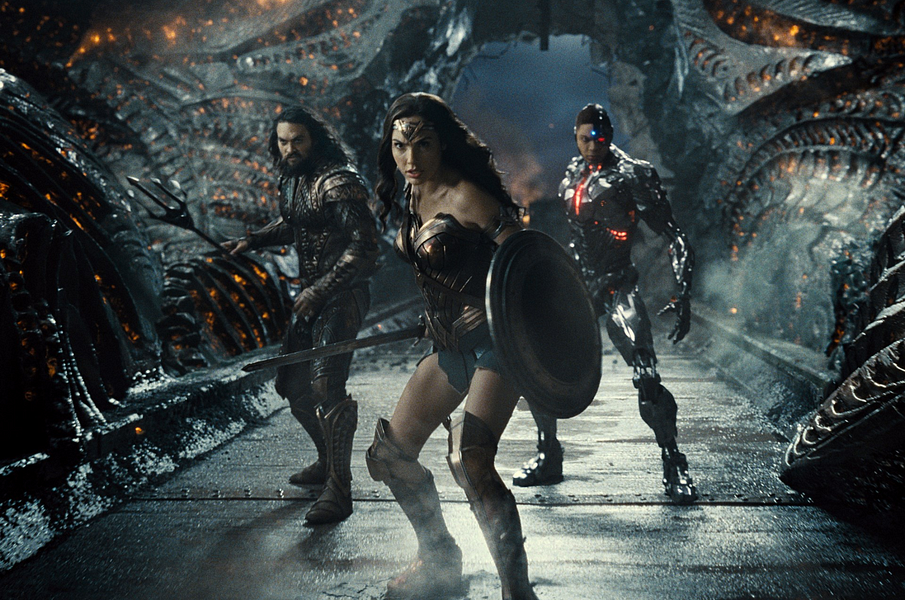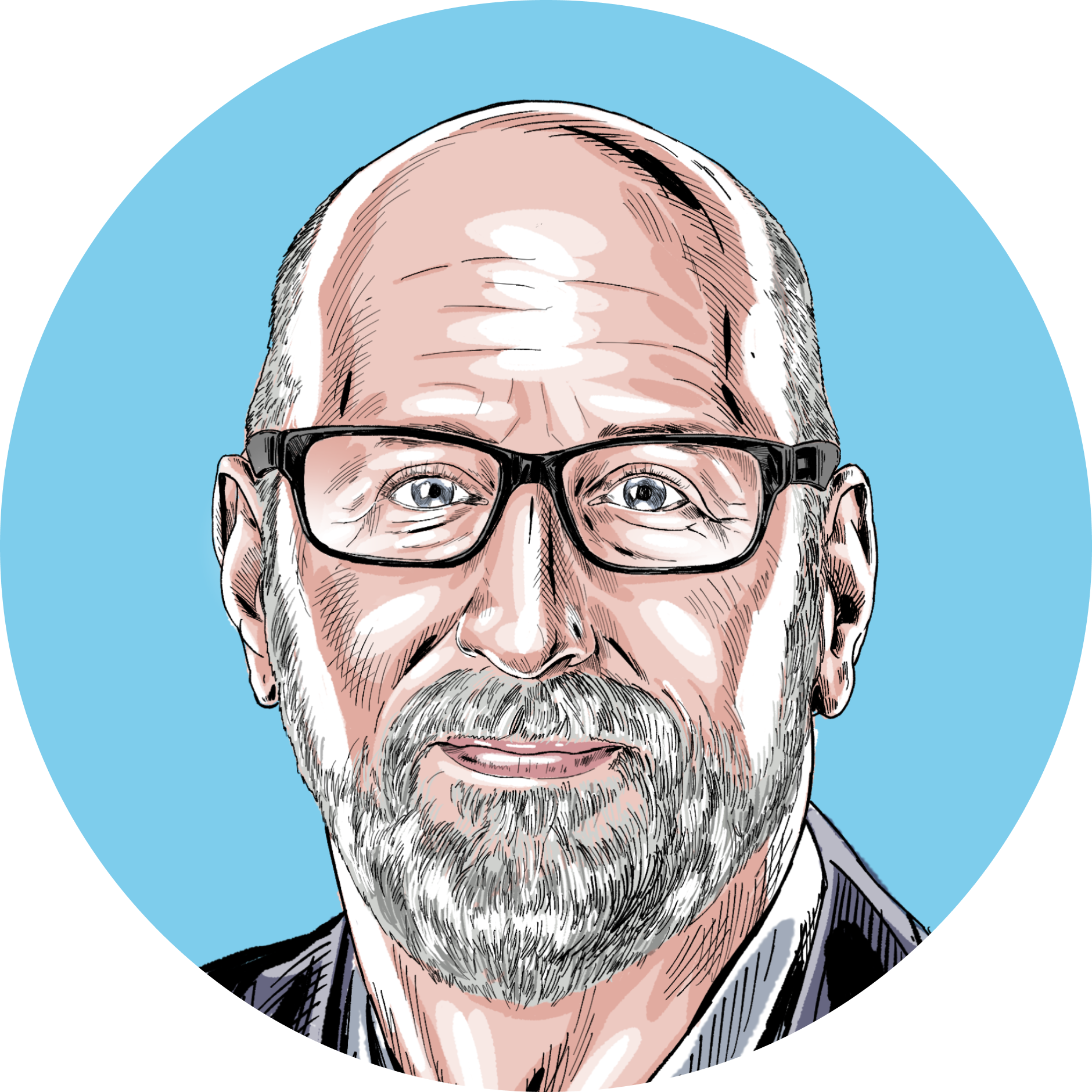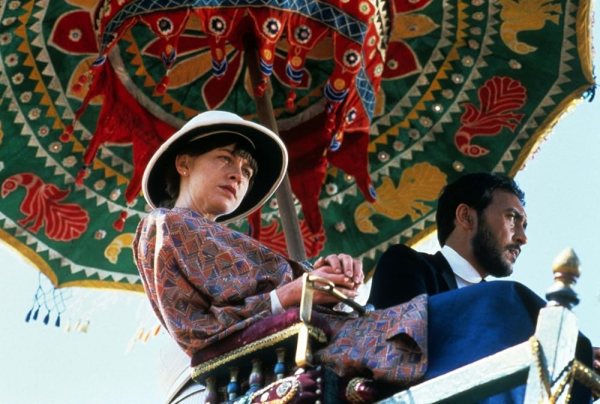When one reviews the immense and growing pantheon of superhero movies, there’s a single question that can separate the good (because, let’s face it, all superhero movies are at least a little bit good) from the great: Does the director take the premise seriously? If he does, then the movie has a chance to be great. If he doesn’t—if he subtly or not-so-subtly makes it clear that we’re on the cinematic equivalent of an amusement park ride—then he’s capped out at good. He’s made movie cotton candy, something that tastes just fine but has no lasting substance.
For some time we’ve placed superhero movies and television shows in a different mental category from high fantasy. At first glance stories of elves, dwarves, and magic rings are no less ludicrous than stories of alien superbeings or Greek gods, but when you take a premise seriously, build a world with rigor, and connect the story with human experience, you have a chance to make something transcendent.
Lord of the Rings achieved transcendence. At its peak, Game of Thrones was arguably the best show on television, ice zombies and all. But how many superhero movies have reached those heights? How many have even tried?
The short answer is that Christopher Nolan achieved it. His Batman trilogy is so good that it’s almost not even perceived as a superhero series. They’re just great movies. Full stop. The longer answer is that Zack Snyder tried, and while he didn’t reach Nolan’s heights, he created something truly distinct—a universe that took its premise seriously and explored the world that superheroes would create.
Make no mistake, this is not everyone’s cup of tea. Except for rare moments when the stakes feel real, Disney’s wildly popular Marvel movies are always winking at the audience. They know you’re in the theater for a good time. And that’s fine! There’s a place for that—especially when Disney can hit the action/comedy/escapist sweet spot. Thor: Ragnarok comes to mind. But still, the best Marvel movies are the most serious. Captain America: Civil War, Avengers: Infinity War, and Avengers: Endgame all took their premises more seriously than most Marvel films, and audiences were rewarded with the best movies in the Marvel universe.
But let’s go back to Snyder. Last night HBO Max premiered one of the most improbable movies in recent cinematic history—a four-hour remake, not of a beloved film but of one of the most widely reviled movies in recent cinematic history. Warner Brothers doubled down—to the tune of at least $70 million—on a failed film.
It’s a long story how this happened, but the short version is relatively simple. Almost a decade ago, Warner Brothers handed the reins of its DC universe to Snyder, a filmmaker known for creative, dark, and highly stylized movies like 300, Watchmen, and Sucker Punch. His first movie, Man of Steel, was perhaps the most intensely serious Superman movie ever made.
I thought it was outstanding. As my (nearly infallible) pop culture guru Sonny Bunch wrote of Snyder’s vision, “The idea, beginning with ‘Man of Steel,’ was a simple one: What would happen if gods appeared on Earth?” I loved what Snyder created. It sounds strange when describing a movie about a virtually indestructible person who can fly and shoot laser beams from eyes, but Man of Steel felt real, and when Batman reacted to Superman’s immense power with rage and fear in Snyder’s next film, Batman v. Superman, that felt real as well.
But not everyone liked these films. Man of Steel was controversial in part for Henry Cavill’s portrayal of a troubled, burdened Superman who was initially uncertain about his role on Earth. Batman v. Superman was even darker and a box-office disappointment.
Writing in The Bulwark, Sonny Bunch sums up what happened next:
Following the critical drubbing of, and audience ambivalence toward, Batman v. Superman: Dawn of Justice [Snyder’s second DC movie], WB was very nervous. They freaked out when Zack Snyder showed them what he was doing with Justice League; following a screening of the mostly FX-less workprint, the studio heads got together and called in [Avengers director] Joss Whedon to rework the script and coordinate on reshoots of the already-largely-shot film. Following the death by suicide of Snyder’s daughter, Autumn, Whedon was given more or less free rein to do as he pleased.
More:
Justice League debuted to boos from audiences and critics alike, and for good reason: It’s a jokey, sloppy mess of a movie. Many of the choices, like the decision to replace composer Tom Holkenborg, a/k/a Junkie XL (who had worked on Man of Steel and Batman v. Superman) with Danny Elfman, baffled diehard fans of the series. But rumors persisted of a cut of the film untainted by the Buffy creator’s hackwork. Fans seized on the idea, mounting an entirely grassroots online effort to pressure the studio into releasing it. While film Twitter sniggered, Snyder fanned the flames by releasing hints here and there, storyboards, nuggets of ideas, glimpses into what might have been. Eventually the stars got on board, tweeting their support for their director. Added to all this was the fact that Warner Bros. needed something to promote their new streaming service with, a big splashy title sure to grab eyeballs and attention.
Hence: Zack Snyder’s Justice League.
The movie is excellent. It’s powerful. It’s so different from the subpar original that you can walk into the new, longer (four hour!) version even after freshly watching the first movie and still lose yourself in the story.
Snyder’s cut picks up immediately after Superman’s death in Batman v. Superman. His death activates an ancient artifact that essentially calls to the movie’s villain, a huge, hulking alien creature named Steppenwolf. The top-line plot is simple—if Steppenwolf can seize the artifact and two others like it (they’re called “mother boxes”), he can unite them, create a “unity,” and bring about the invasion and destruction of the world by the DC Universe’s ultimate villain (the equivalent to Thanos or Sauron), a superbeing named Darkseid.
The heart of the movie, however, is in the characters. Batman belatedly realizes that the world is under threat and that he’s hopelessly overmatched. The original Justice League bounced from action sequence to action sequence. The Snyder Cut tells the story of Batman’s struggle to assemble the team, it brings the characters to life, and it conveys their real desperation when they realize they’re overmatched. To turn the tide, they have but one hope—to attempt to bring Superman back to life.
I can see why the actors backed Snyder. His version lets them shine. In his version they do things that make sense. (Famously, Whedon squandered Flash in the climactic battle by using him to save a few civilians who were inexplicably—and for no plot purpose—living close to a nuclear toxic waste site. In the Snyder Cut, Flash’s extraordinary powers are indispensable to the ultimate outcome, and the civilians are nowhere to be found.) In his version, the characters seem real.
But don’t think for a moment that the Snyder Cut is some sort of superhero version of an art-house film. It’s action sequences are stunning. In fact, that’s the thing I’ve long admired about Snyder’s version of superhero conflict. He conveys their raw power better than anyone else. From the first fight in Man of Steel to the final showdown in Justice League, you never forget for a moment that these characters are powerful. And when they fight it’s brutal. It’s destructive.
After watching the Snyder Cut, I still believe that Nolan’s Batman trilogy sits atop the superhero pyramid, but Snyder’s three movies are right there below, alongside Marvel’s absolute best. But Snyder’s movies are different. As Sonny Bunch notes, they’re more fantasy epic than comic book series. They’re for people who want to get lost in a different world, and who want to think about what that world would truly be like. That’s what good fantasy fiction does. That’s what Zack Snyder did.
I have no idea if there will be additional Snyder Justice League films. He’s mapped out an entire story arc that I’d love to see. But even if Snyder’s DC story ends here, it ends well. The original Justice League has been erased from our memory, replaced by the movie that should have been made, a movie that lets us truly imagine and for a few hours inhabit a fascinating—and terrifying—world where Superman truly lives.








Please note that we at The Dispatch hold ourselves, our work, and our commenters to a higher standard than other places on the internet. We welcome comments that foster genuine debate or discussion—including comments critical of us or our work—but responses that include ad hominem attacks on fellow Dispatch members or are intended to stoke fear and anger may be moderated.